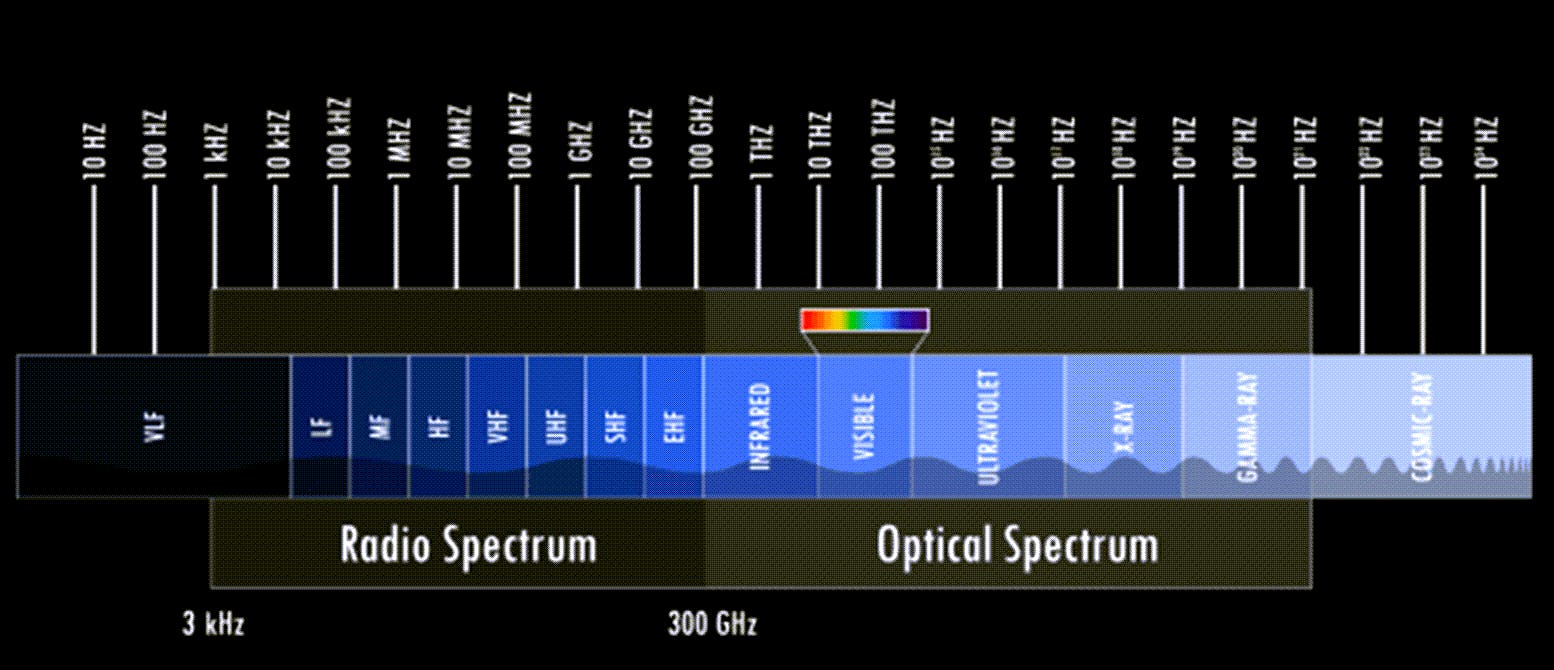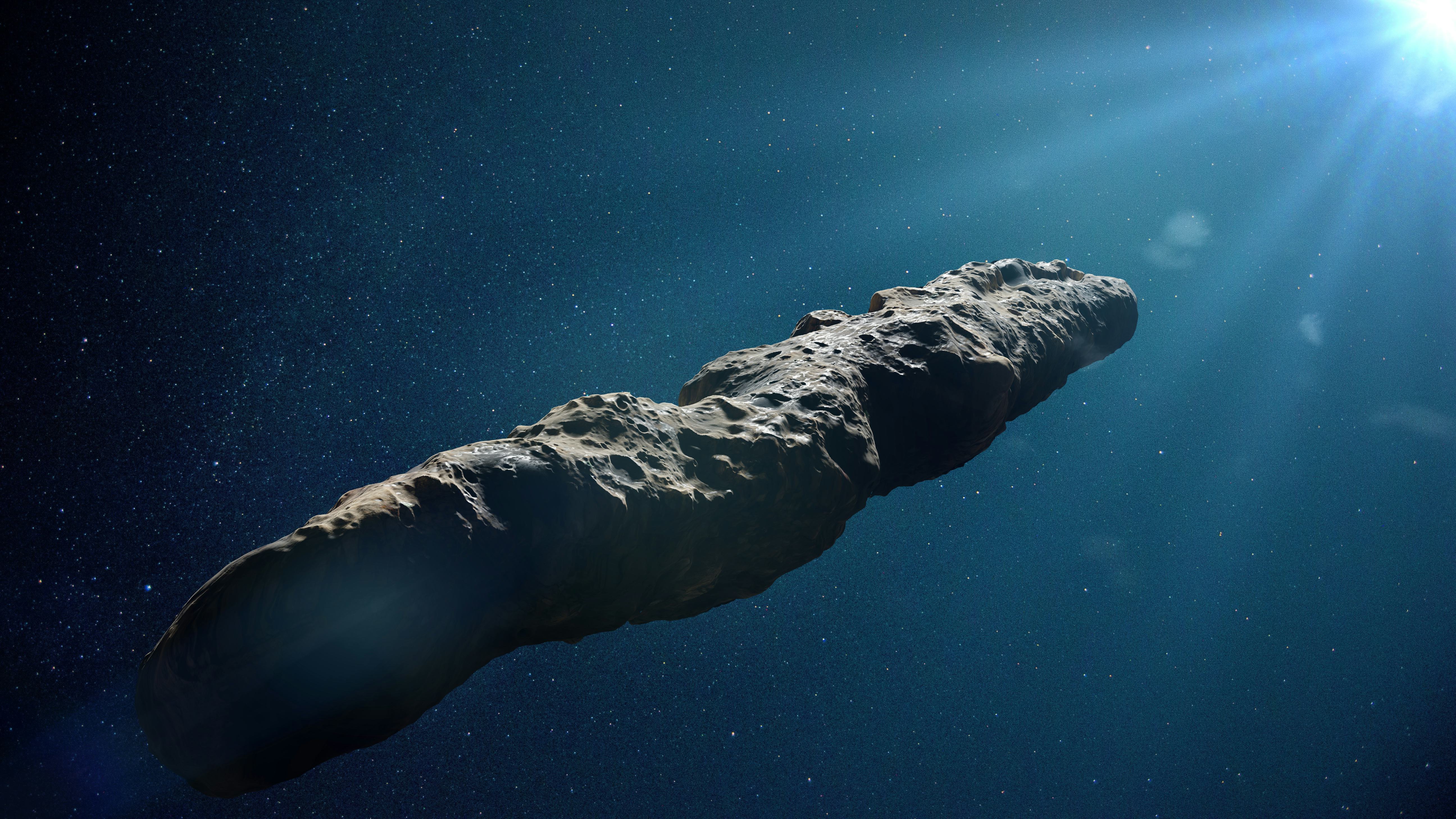
Do aliens exist? Almost certainly. The universe is vast and ancient, and our corner of it is not particularly special. If life emerged here, it probably did elsewhere. Keep in mind this is a super broad assumption. A single instance of fossilized archaebacteria-like organisms five superclusters away would be all it takes to say, “Yes, there are aliens!” … if we could find them somehow.
Wiretapping ET
Until we can send paleontologists to other galaxies, the best way to search for aliens is to stay at home and look for “techno-signatures.” What are they exactly? Honestly, we don’t know, but we can make some good assumptions.
For example, when we use radios to communicate, we produce signals that are very different than the natural sort of energy you’d get from a star. It’s reasonable to assume aliens would do the same thing for their communications, so we mainly search for unnatural-looking radio signals from fixed points far away in space.

Radio sensing, or any scientific attempt to detect non-human techno-signatures, can be referred to as the Search for Extra-Terrestrial Intelligence (SETI). SETI efforts are generally led by organizations like the SETI Institute and Breakthrough Listen. Citizen scientists play a key role in analyzing data as it’s gathered and sometimes even making their own follow-up observations on possible detections.
So far, several candidate detections have been made, but none have been confirmed. That’s no surprise since the universe is vast and ancient. It’s a matter of sample size. As Jill Tarter pointed out, if you scooped up a glass of ocean water and searched it for fish, you probably wouldn’t find any. As time spent searching increases and technology improves, our odds of detection improve.
Are aliens nearby?

Probably not, for the same reason that the universe is vast and ancient. It takes more technology than Earth has to travel past more resources than our entire Solar System has just to get here. SETI can be done from home by detecting radio, optical, and gravity waves. Messages could be exchanged between civilizations with the same technology.
Short of tourism, there’s just not much reason to make the trip. Should we check, though? Sure! Even if we don’t find aliens, who knows what else we could learn by searching?
Our first challenge here is defining the size of the Solar System. Neptune orbits the Sun at an average distance of 30 AU. The Oort cloud may extend to as far as 100,000 AU from the Sun. The factor of difference in volume to search is over 37 billion. By comparison, if you were tasked with finding an alien in New York and you forgot to ask “city or state?” the factor of difference in search area would be only 180.
The next big challenge is one of stealth — a special case of the Fermi paradox. If they are here, the aliens don’t seem to be trying very hard to say hello. It remains to be seen whether it’s because their artifacts are inert, their sensors are passive, their technology is undetectable by us, or they’re just not there. This conundrum is found at the dramatic core of the second act of most submarine movies, but at least in those movies, you know the other guys are there. So either we send Sean Connery up there to make the aliens give us a ping, one ping only, or…
The Galileo Project

Founded in July of 2021 by Avi Loeb and Frank Laukien of Harvard University, the Galileo Project is the first scientific research program to search for astro-archaeological artifacts near Earth. They mostly use the term Extraterrestrial Technological Civilizations (ETCs) instead of ETI — basically the same thing but without judging alien intelligence by human standards.
The Galileo team has been very consistent in bringing a rational tone to the discourse around alien visitation. For example, the project has publicly committed to testing only “known-physics” hypotheses and analyzing only new data. The project is “agnostic to the outcome,” meaning that its only goal is to gather and analyze data in a reliable and reproducible way, openly sharing both the data and their testable conclusions. For science, this is all normal and expected, but for anyone genuinely curious about ancient aliens, the Galileo Project is a desperately needed breath of fresh air.
The Galileo Project has 4 main experimental tracks:
4. Imaging Unidentified Aerial Phenomena (UAP) in the infrared, radio, and optical bands and recording audio data.
The team has designed, built, and deployed their own observation equipment and AI to gather and interpret these data. At the time of writing, the suite of instruments has been deployed for calibration and testing and will be redeployed for full operation in the next few months.
3. Rendezvousing with future InterStellar Objects (ISOs) passing through the Solar System like ‘Oumuamua and 2I/Borisov, with an estimated project budget of just over $1 billion, or about one quarter the price of a single SLS launch.
2. Recovering the fragments from interstellar objects that collide with Earth, such as CNEOS 2014-01-08 which impacted off the coast of Papua New Guinea.
At the time of writing, an expedition has just been fully funded, and production of specialized machinery has begun.
1. Searching for small alien satellites orbiting the Earth using the Vera C. Rubin Observatory when it comes online in 2023.
This will require developing new advanced software to detect what would be very small and fast-moving objects, likely in irregular orbits. The AI will also scour data from human-made satellites for nearby alien techno-signatures.
Focusing on physical artifacts is a new strategy in SETI, but Loeb and Laukien are optimistic. Artifacts, they point out, are necessarily less fleeting than radio signals. While an object might be technically more difficult to detect than a signal, an object would not have to somehow repeat itself if missed the first time. Also unlike light, most physical objects in our galaxy are gravitationally bound to it. This makes detection less time-critical for a physical object.
#StartupLife
Like every SETI effort, the Galileo Project has to do the most it can with what they have. In its current state, the project couldn’t detect a magnetic anomaly on our Moon, let alone a time capsule left for humanity on Planet X. (In fairness, Planet X hasn’t been discovered yet, only predicted.) But the experimental tracks already in motion exemplify three cost-effective ways to investigate a reasonable set of assumptions of what alien visits might look like.
The bottom line is that, as Loeb writes, “the lack of ‘extraordinary evidence is often self-inflicted ignorance.” Project Galileo is not investigating some triviality like black swans or square trees; it is impartially asking one of humanity’s most fundamental questions in a new way.
“Are we alone?” Well, let’s start by checking the backyard.
Want to be among the first to find out when the Galileo Project makes an interesting detection? Head over to Twitter and follow @universetoday. Then, make sure to follow @galileoproject1. Based on Seth Shostak’s recounting of a candidate’s radio detection in 1997, there’s a good chance you’ll hear about it before your head of state!
This article was originally published on Universe Today by Seth Lockman. Read the original article here.







